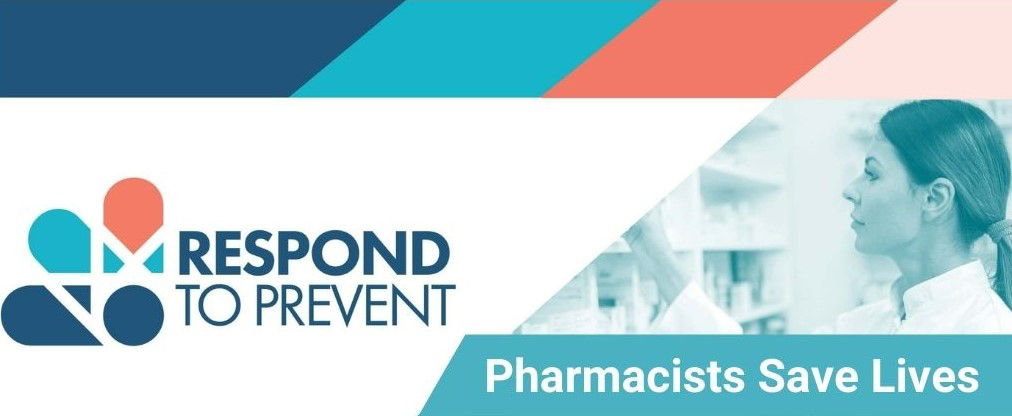Project Overview
RESPOND TO PREVENT is a four-state randomized trial funded by the National Institute on Drug Abuse (NIDA). The RESPOND TO PREVENT intervention was provided to pharmacists, pharmacy managers and pharmacy technicians working in 176 community pharmacies located in four states: Massachusetts, New Hampshire, Oregon and Washington. Pharmacies participating in the intervention were located in both rural and urban areas to improve access to a range of public health approaches that included naloxone dispensing, syringe safety and prescribing buprenorphine. All pharmacies were supplied with patient-facing materials that were developed to improve engagement strategies and to help reduce the stigma of seeking harm reduction services in community pharmacies.
For more information please see RESPOND TO PREVENT Overview.

The RESPOND TO PREVENT intervention was developed incorporating a variety of community engagement approaches from pharmacists, caregivers and public health partners to better support people who use drugs. The community-based components of the intervention leverage evidence-based methods to address harm reduction service through education, training and feedback loops that enhance communication and collaboration between pharmacies and the communities they serve. RESPOND TO PREVENT recognizes that pharmacies as healthcare providers are uniquely positioned to serve OUD patients and is designed to enhance community pharmacies ability to expand access to life saving harm reduction services.
The RESPOND TO PREVENT intervention presented as a toolkit provides pharmacies with resources such as a readiness assessment, academic detailing, online training modules and secret shopping which facilitated feedback loops for enhancing interactions with patients. These approaches aim to reduce stigma, promote opioid safety and to increase access to harm reduction resources like naloxone, syringes and buprenorphine.
Research Design and Outcomes
The study uses a stepped wedge, clustered randomized trial design rolled out over five waves across four states: Massachusetts, New Hampshire, Oregon and Washington. In this design, the timing of the intervention receipt was randomized; all 176 pharmacies eventually received the intervention. The study is of critical importance as the U.S is in the midst of an opioid crisis and a global pandemic. Community pharmacies are well-positioned as institutions to provide healthcare, educate patients on opioid safety and to offer counseling for patients who are taking opioid medications. However, naloxone-specific patient and caretaker engagement training is needed for pharmacists and technicians, to improve naloxone dispensing, follow-ups and counseling with patients.
The objective of RESPOND TO PREVENT was to integrate two previously developed educational approaches (RESPOND and MOON) and to test their effectiveness at improving opioid safety engagement and naloxone-related outcomes in community pharmacies. This study tests the combined interventions effectiveness at improving opioid safety engagement and naloxone-related outcomes in community pharmacies.
